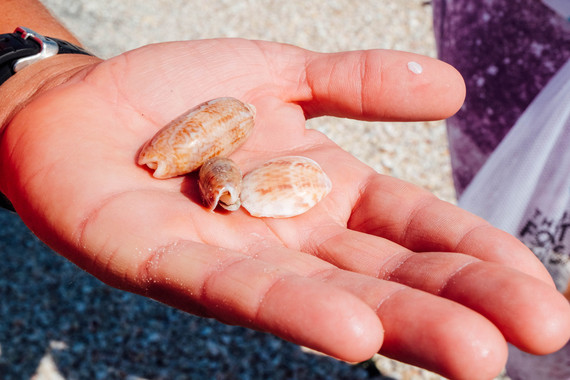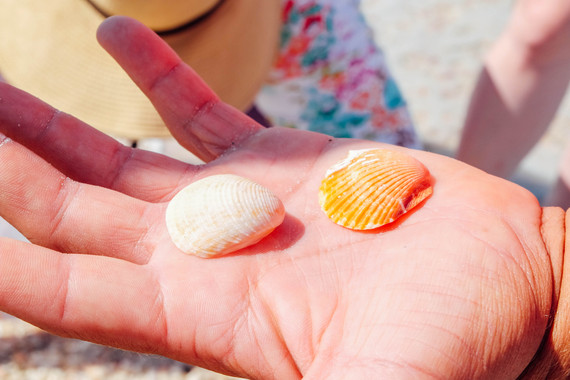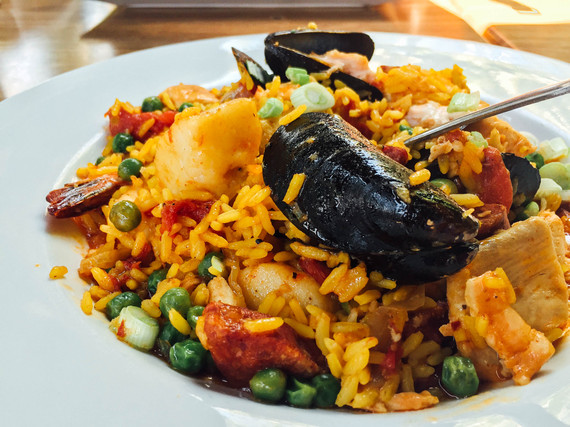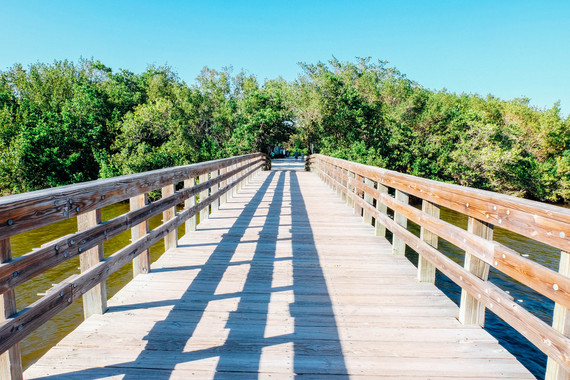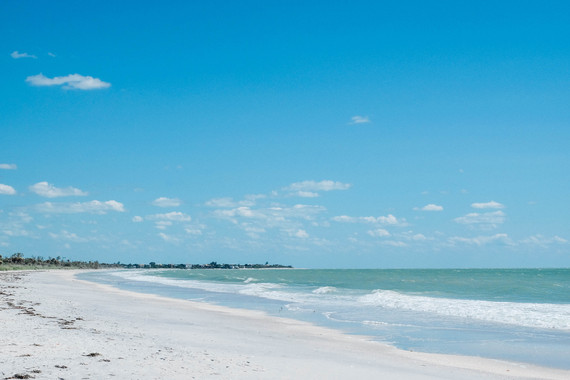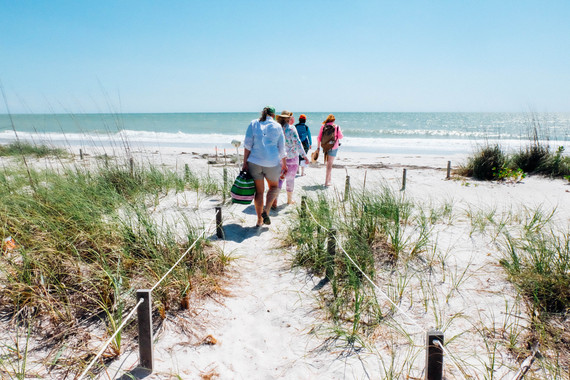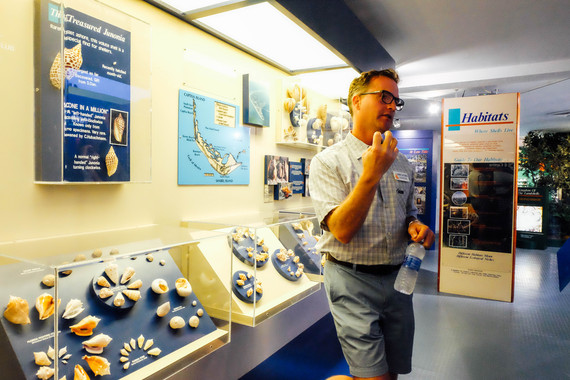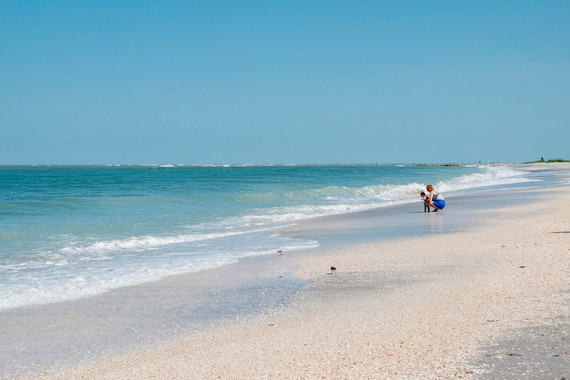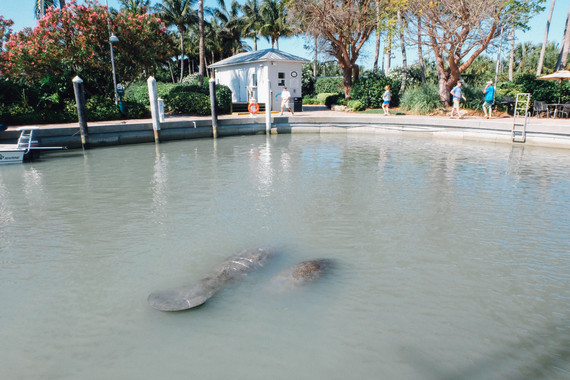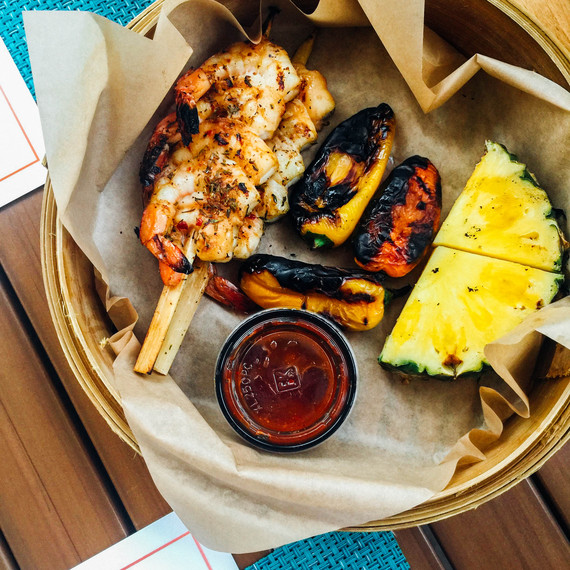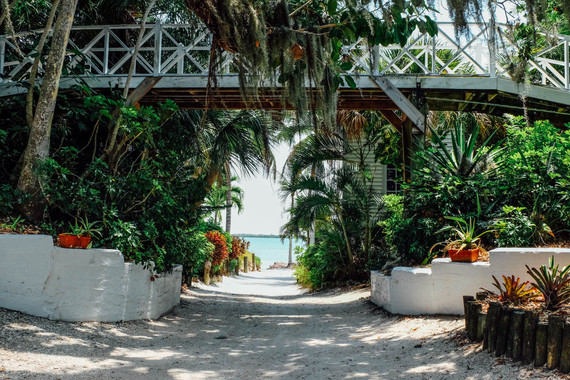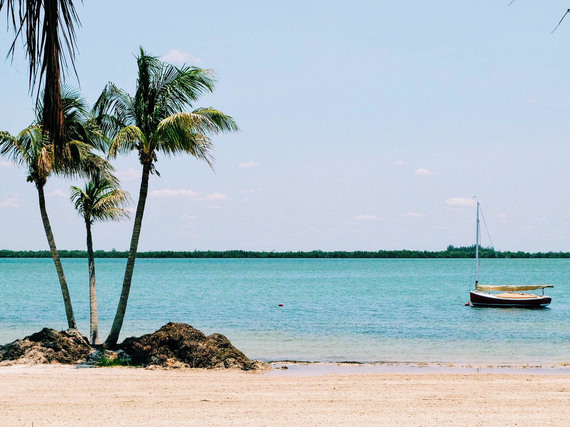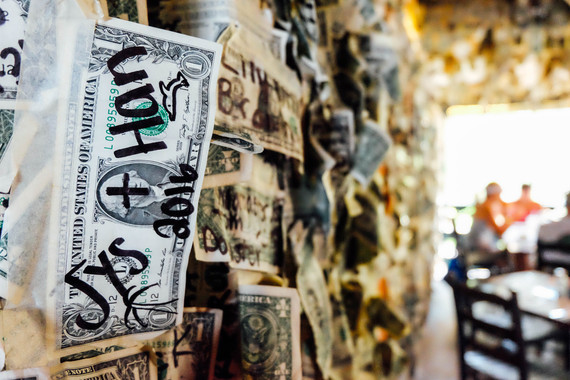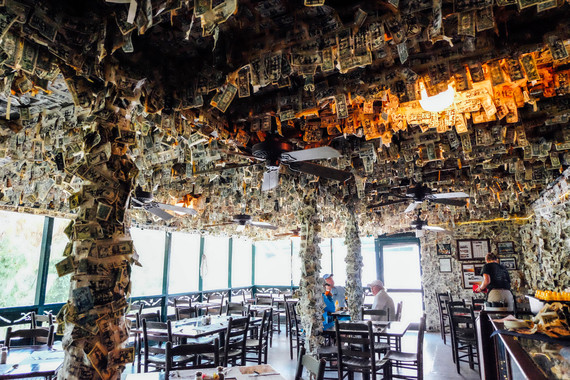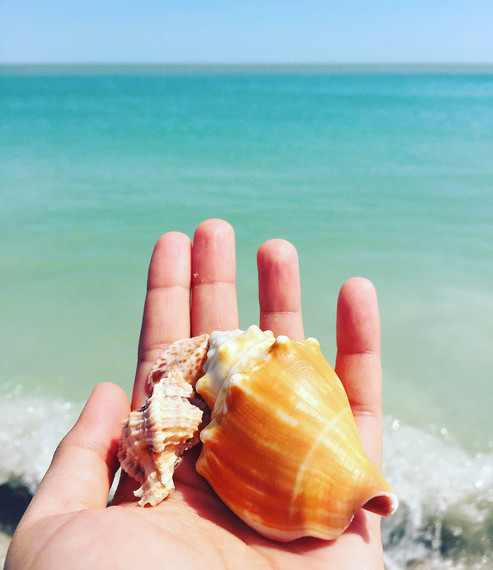Shelling is not just a casual endeavor that people do on the side, time permitting. At least not on the islands of Sanibel and Captiva in the Southern section of Florida's shimmering gulf coast. And especially not to the folks that live or frequent there. On these quiet, idyllic barrier islands that together form a natural scoop for the shelled mollusks that roll in from the West and the South, shelling is, more than anything else, a way of life.
It doesn't take long for anyone to realize this. Drive along the islands' main road, past small, healthy mangrove forests and brightly-painted beach houses, and you'll see the signs: a shell factory, a large and quite impressive shell museum (more on this later...), and fine, sandy beaches flourished with long stretches of shell piles. Here, you'll see people--kids and adults--bent at the waist and slightly hunched over (aka the "Sanibel Stoop"), faces in serene concentration, as they sort through those clusters hoping to find a rare Junonia or even, fingers crossed, a small Lightning Whelk to add to their shellection.
Perhaps many shellers here can trace their passion for the craft all the way back to their childhood. It's an easy assumption; who hasn't, at least once when they were young, found unadulterated joy in combing the beach for such little treasures as shells, shark teeth, sand dollars and sand glass? Even resident shell expert, Pam Rambo, whose enchanting personality and positivity has possibly drawn as many visitors to the area as her popular shelling blog ILoveShelling.com, admitted as much. It explains how irresistible and addicting shelling is, really: it is as pure and carefree as those easy childhood summers when all that mattered is finding the perfect treasures to admire and take home.
Sitting down with Pam at Doc Ford's Sanibel Rum Bar & Grille over a large plate of paella and some of the islands' delicious and sustainably-farmed stone crabs, I discovered that there's a lot more to shelling than simply heading out to a popular beach with a bucket. The direction of the wind, the size of the swells, and whether or not there was a storm earlier in the week are some of the factors that determine which beaches would have the best finds and how many cool ones you'll actually come across. Bowman's Beach and Blind Pass Beach along the scoop handle may be among the local favorites; but depending on the wind, you may have a better haul at the Gulfside City Park or on neighboring Cayo Costa Island, whose quiet white sand beaches stretched delightfully empty for miles.
There are tips to looking as well: start your search at the break of dawn and when the tide is low if you want dibs on the best ones; fighting conchs and murexes are more likely to show up in beach drifts where the waves hit the sand while lighter ceriths, slippers, scallops and cockles can easily be found sunning on the beach; and do keep an eye out for live sea urchins when shelling on sand bar, you wouldn't want to step on them. And there are certain rules to be followed--leave the live ones be as it's illegal to take them.
There are different sorts too. You can find about a few hundred types--cantharus, augers, kitten's paws, conchs, cones, jewel boxes, murexes, whelks, to name a few--washed up on the beaches on Sanibel, Captiva and the neighboring islands. Some roll in large numbers while others, like the rare Junonia, come few and far between, which makes this mildly physical activity more stimulating.
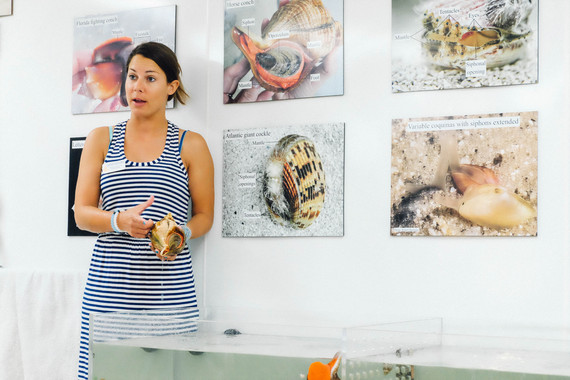
Marine Naturalist Stefanie Wolf doing a live tank demonstration at Bailey-Matthews National Shell Museum | Photo: Michelle Rae Uy
It may take you a while and long hours of shelling to find an unusual one. At the Bailey-Matthews National Shell Museum on Sanibel-Captiva Road, you won't have to. You can admire every type of shell here, the only one of its kind in the country, not just from the area but from other parts of the world as well. This shell museum is home to a couple of record-holding shells, including the largest horse conch shell ever found. But the best part may be its live tank demonstrations, held at least a couple of times daily by the museum's brilliant Marine Naturalist Stefanie Wolf or one of her marine biology colleagues to educate visitors about the ways and lives--and apparently, cannibalism--of these captivatingly complex creatures.
Shelling isn't the islands' only draw. With over 100 individual islands and around 50 miles of fine, ivory-colored beaches in the area collectively known as the Beaches of Fort Myers and Sanibel, there's an abundance of things to see and do, and even better, lots of seafood to feast on. At the South Seas Island Resort alone, the charming resort that served as my base during my short time on the islands, I've witnessed the comings and goings of dolphins, manatees and those weird-looking sea hares from a few feet away as well as sampled the freshest seafood dishes and the best triple chocolate cake I've ever had. There are others too: the private Useppa Island and the lovely Collier Inn, which you can visit by boat through Captiva Cruises; Cabbage Key, whose famous restaurant is covered with one dollar bills left by its patrons and visitors in the spirit of an old fishermen's tradition; and The Bubble Room, whose obvious and slightly chaotic obsession with Christmas and Old Hollywood is as intense as its massive slices of cakes.
Shelling, however, remains to be the top draw. Having consumed a large amount of amazing seafood dishes during the trip, I opted to go for a run on the beach on my last day to burn off the extra calories. Halfway back, I noticed a delicate, soft pink top shell peeking out from under the sand, a tiny little thing. It was my first top shell find so naturally, I congratulated myself for having seen it, self-promoted myself from a shell newbie to a bit of an expert and decided to continue the rest of the way in "Sanibel Stoop" to look for more. That's the thing about shelling, really: at first, it almost seems like the sort of mundane activity you think you'd want to avoid, but it only takes finding that first perfectly preserved, harder-to-find shell to get you hooked.
Shelling is, in many ways, its own reward after all. There's something extremely gratifying about finding a beautiful tulip or a shiny olive shell, when you've spent half an hour or so combing through hundreds of pieces of the more common clams and cockles. There's a certain sort of victory there, I suppose, albeit small.
Michelle Rae Uy is a travel writer, editor and amateur photographer based in Los Angeles. Check out her adventures on Another Spur on the Road.
